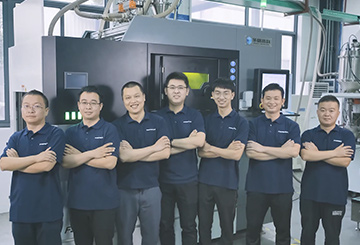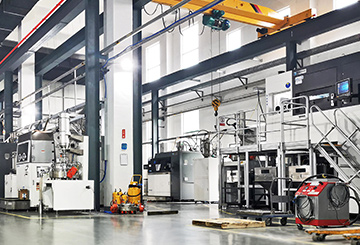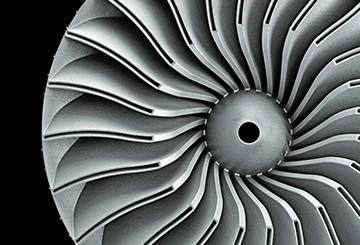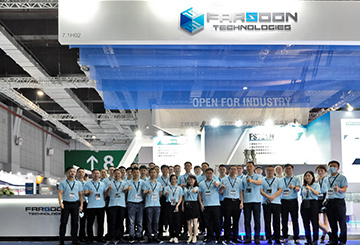Overview:
The conventional shoe mold manufacturing industry, known for its labor-intensive processes, is grappling with a list of challenges—complex production steps, labor shortages, precision requirements, and the need for more eco-friendly practices.
As the industry evolves, there’s an increasing demand for innovative solutions that can streamline operations, reduce dependency on manual labor, and enhance sustainability. 3D printing as a transformative technology is bring new possibilities into design innovation and product manufacturing in the shoe-making sector.
Farsoon Technologies, a technology leader in PBF additive manufacturing, recognized the potential for 3D printing to address these challenges head-on. Collaborating with key industry partners, Farsoon embarked on an in-depth exploration of the shoe mold supply chain. The goal was clear: to understand the specific demands of leading footwear brands, metal shoe mold suppliers and also manufacturers of midsole and outsole; to develop tailored solutions that could meet these needs while pushing the boundaries of what was possible in shoe mold manufacturing.
Leveraging its extensive expertise in metal additive manufacturing, Farsoon crafted a comprehensive, innovative approach that addressed every aspect of the shoe mold manufacturing process. This approach wasn’t just about introducing new technology of additive manufacturing; it was about rethinking the entire application process—from the 3D printers, materials, parameters, postprocess to software.
By integrating 3D printing into the traditional manufacturing process, Farsoon’s solution enabled the application and production of complex, high-quality shoe molds at a scale: including “popcorn” molds, EVA molds, and RB molds — types that are widely used in the production of both athletic and casual footwear; achieving innovations in over ten types of manufacturing processes. The adoption of Farsoon’s 3D printing solutions led to the sustainable production of over 100 million pairs of shoes by Aug 2024, demonstrating the technology’s ability to support high-volume manufacturing while reducing environmental impact.

Figure 1: Farsoon’s technology milestone in shoe-mold industry.
Innovative Application Cases
The traditional shoe mold production process is a complex, multi-step procedure that includes creating CNC wood molds, finishing the wood molds, making silicone molds, casting plaster molds, consolidating the plaster, casting metal molds, and applying texturing. Despite the intricacies involved, this method often struggles to achieve detailed texturing, limiting the precision and quality of the final product.
With metal 3D printing, the production cycle of shoe molds is drastically shortened, and digital texturing technology enables the precise replication of intricate patterns. This approach streamlines the entire manufacturing process—boosting efficiency and accelerating product iterations. For shoe mold manufacturers, this is a game-changer: it reduces manufacturing costs, enhances product performance, and speeds up time to market.

Figure 2: Shoe mold manufacturing comparison: traditional vs 3D printing

Figure 3: Farsoon’s shoe-mold industry partner Victory Group located in Guangdong. Over 30 Farsoon metal system, including FS350M and FS200M installed at Victory Group for series production.
Case 1: “Popcorn” mold
The “Popcorn” shoe mold is a standout example of how 3D printing technology can dramatically improve the precision of shoe sole molds. Each “popcorn” shoe mold is equipped with up to 16,000 ventilation airholes, each as tiny as 0.1mm in diameter. With a surface density of about 95%, these molds ensure excellent aeration while preventing clogging, resulting in finished shoes that are both lightweight and highly elastic.

Figure 4: Farsoon “Popcorn” shoe mold, image courtesy Farsoon.
Case 2: EVA mold
Adopting metal 3D printing technology to EVA shoe molds marks another innovative breakthrough in manufacturing efficiency. Traditionally, producing EVA foam shoe molds involves thermoforming and cooling, with production efficiency largely dependent on cooling time. By integrating conformal cooling channels, 3D printed EVA shoe molds create a perfectly uniform and snug fit between the cooling channels and the mold surface. This advancement boosts High production efficiency by nearly 100%, achieving the goals of improved quality and efficiency.

Figure 5: Farsoon “EVA” shoe mold, image courtesy Farsoon.
Case 3: RB mold
3D-printed RB shoe molds enable the seamless integration of hundreds or even thousands of intricate design patterns within a single mold, significantly enhancing both design flexibility and production efficiency. Compared to conventionally manufactured products, 3D-printed molds reduce lead time by 20% and improve the durability of the finished product by an additional 20%.

Figure 6: Farsoon “RB” shoe mold, image courtesy Farsoon.
Machine solutions for shoe mold production
Farsoon Technologies, driven by a commitment to technology innovation, actively listens to customer needs in the shoe mold industry. In response, the quad-laser FS350M are launched in 2023: with tailor-made features for the shoe mold sector, providing industrial users with powerful tools for high-volume production that cut costs, improve quality, and enhance efficiency.

Figure 7: Farsoon FS350M metal system with tailored features for shoe mold layout.
The FS350M comes standard with 4 500-watt fiber lasers and fast scanning speed of up to 10m/s. It features highly efficient powder recoating technology whose speed up to 400mm/s, the entire powder bed can be covered in just 8 seconds – 38% higher efficiency compared to standard recoating. The multi-layer airflow design ensures airflow uniformity, resulting in uniformed printing quality.
Customized material for shoe mold applications
To meet the unique material and application demands of the shoe mold industry, Farsoon partnered with industry leaders to conduct key studies on material sintering, composition, and morphology. In 2021, this collaboration led to the development of ST1, the industry’s first 3D printable low-carbon alloy steel, designed specifically for metal powder bed fusion (PBF) processes. Unlike stainless steel, ST1 allows for precise electro-patterning, a critical requirement for shoe mold manufacturing. This breakthrough in material innovation expands the possibilities for manufacturers, empowering them to confidently adopt additive manufacturing technologies for enhanced performance and precision.

Figure 8: 3D printed shoe mold with high-performance ST1 material, image courtesy Farsoon.
Today, Farsoon has expanded its material processing solutions to include a variety of stainless steel and aluminum alloys, tailored for shoe mold production. These solutions effectively address challenges such as excessive hardness and insufficient engraving, ensuring the durability and stability of the molds throughout their lifecycle.
Advanced application development for enhanced efficiency & precision
• SRS Technology
Designing supports for overhanging structures to prevent deformation in complex parts is a common but challenging aspect of metal 3D printing. Farsoon has successfully addressed this with the development of its revolutionary Support Reduction System (SRS) technology, particularly in the context of shoe mold production. SRS dramatically reduces the need for supports compared to standard metal PBF processes, enabling the fabrication of suspended structures at low angles of 25° without requiring any support.
• Multi-layer thicknesses Parameters
For a boost in build efficiency, varying the layer thickness within a single print job allows for tailored adjustments based on application requirements. By fine-tuning the recoating process, productivity can see a significant jump, increasing by 30-40%.
• Smart lapping
By adjusting the overlap position based on the workload of each layer, the working time of each laser is balanced, minimizing downtime between lasers. This approach maximizes build efficiency by ensuring that all lasers operate in sync with minimal waiting time.
• Detail / high-speed parameters
Applying detailed and high-speed parameters to each layer strikes the perfect balance between enhanced efficiency and surface resolution. In the sliced shoe mold, each layer is divided into two zones: the contour zone and the in-fill zone. Fine parameters are used for the contour zone to ensure precision, while high-speed parameters are applied to the in-fill zone, maximizing production speed without compromising quality.
Innovative texturing software
In May 2024, Farsoon Technologies introduced a cutting-edge selective texturing technology specifically tailored for shoe mold designers. This innovative tool allows users to assign multiple origin points on a shoe mold to generate customized textures. Additionally, designers can fine-tune algorithms to create personalized pattern distributions on specific surfaces. This technology not only meets ventilation requirements but also opens up endless possibilities in creation.

Figure 9: Farsoon developed texturing software for shoe-mold, image courtesy Farsoon.
Conclusion
In recent years, Farsoon Technologies has forged strong partnerships with leading domestic and international footwear companies, playing a pivotal role in the digital transformation of the footwear industry through 3D printing technology. Looking ahead, Farsoon remains committed to the footwear market, continuously pushing the boundaries of technological innovation to help industry users achieve cost reductions, efficiency improvements, and cutting-edge advancements. We invite customers to join us in leading the industry with additive manufacturing. For more information, please contact us at globalinfo@farsoon.com.


















